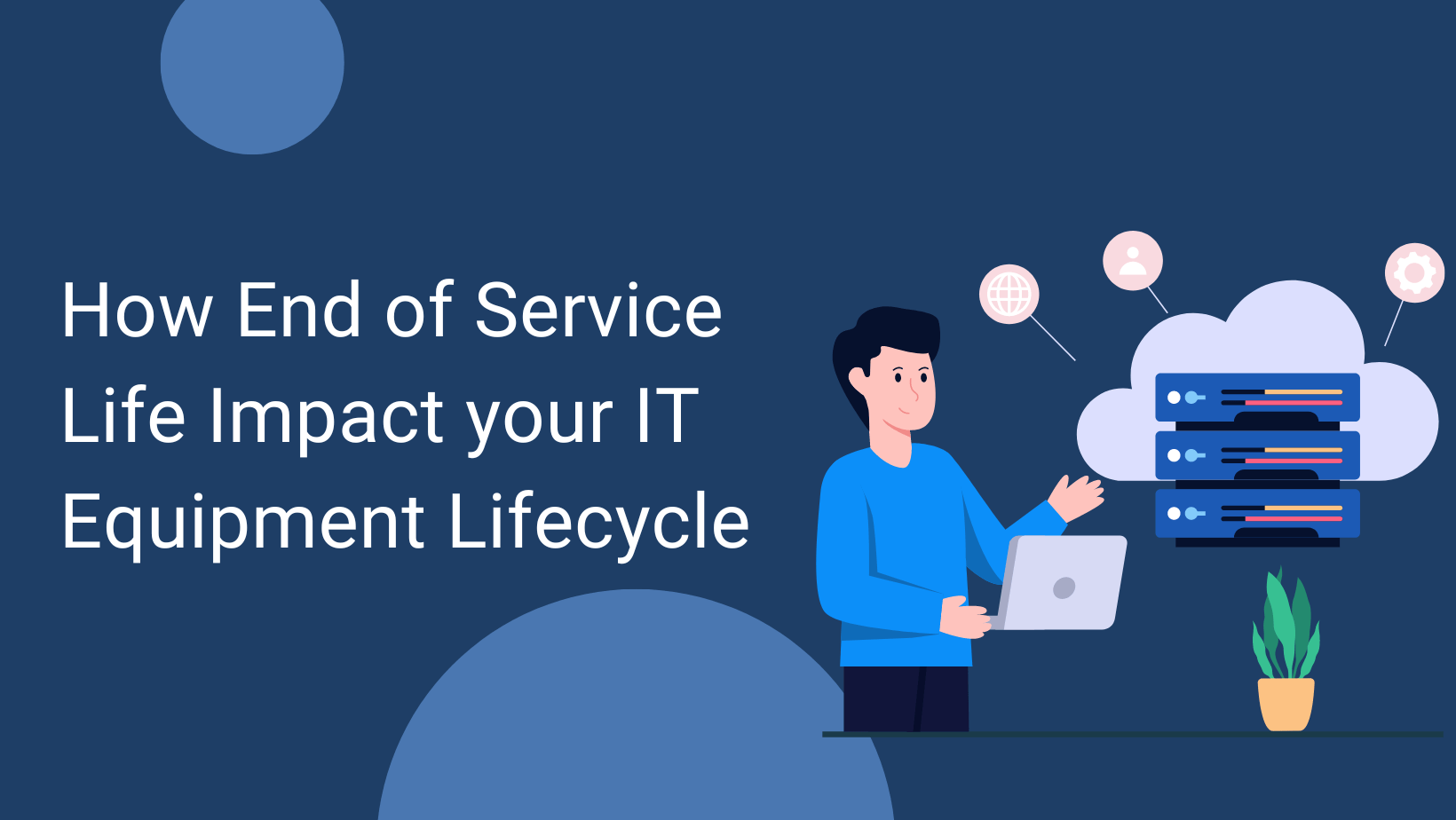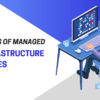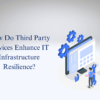EOL vs. EOSL: How They Impact Your IT Infrastructure
When it comes to IT infrastructure, two important terms businesses should be familiar with are End of Life (EOL) and End of Service Life (EOSL). These terms are set by original equipment manufacturers (OEMs) such as Cisco, IBM, or HPE and refer to different stages in the product lifecycle of hardware like servers, storage systems, and networking devices. Understanding End of Life (EOL) and End of Service Life (EOSL) can help businesses make informed decisions about maintaining, replacing, or extending the life of their equipment, especially with third-party maintenance (TPM) as an option.
Your Devices Don’t Die at End of Life (EOL) or End of Service Life (EOLS)
Despite what the OEMs might say, your equipment won’t stop functioning the moment it hits its EOL or End of Service Life date. Often, devices can continue working perfectly well, and there’s no immediate need to replace or upgrade them. OEMs may push for you to retire or upgrade your equipment, but it’s important to know that third-party maintenance services are available to help you extend the life of your hardware, saving you money in the process. TPM services can keep your systems running smoothly even after these dates pass, ensuring you get more value from your equipment.
What is End of Life (EOL)?
End of Life (EOL) is a stage in the product lifecycle where the OEM stops selling or marketing the product. This means the company will no longer offer it to new customers or provide significant updates, such as new firmware or patches. However, it’s important to note that post-warranty support from the OEM often remains available for a time after the EOL date. Many businesses choose to turn to third-party maintenance at this stage, which can provide ongoing support for hardware that has reached EOL, often at a much lower cost than the OEM’s services.
EOL is also sometimes referred to as End of Sale (EOS), highlighting the point at which the product is no longer available for purchase. The key takeaway is that EOL doesn’t mean your equipment is obsolete. You still have plenty of options for maintaining it, often at a fraction of the cost through third-party maintenance providers.
What is End of Development (EOD)?
End of Development (EOD) is the point when the OEM stops producing software updates or patches for the product’s operating system. This marks a critical point because, without these updates, your system could be more vulnerable to security risks, bugs, and other issues. Although hardware support may still be available, the software side of your infrastructure will no longer be actively developed. Many businesses either go for phase-out equipment at this stage or seek alternative maintenance and support solutions, like third-party providers, that can keep the system functional.
What is the End of Service Life (EOSL)?
End of Service Life (EOSL), or End of Life (EOL), represents the final stage in a product’s lifecycle, where the OEM fully discontinues support. This means that the manufacturer no longer provides updates, maintenance, or hardware support contracts for the product. At this stage, the OEM is effectively telling you that they will no longer help you maintain your equipment, and you’ll need to look elsewhere for continued support.
Many businesses might feel pressured to upgrade at this point, but in reality, End of Servicve Life doesn’t mean your hardware stops working. In fact, by turning to third-party maintenance providers, you can extend the life of your equipment, avoid costly upgrades, and continue using your systems for years to come. TPM services can provide ongoing support for EOSL equipment, including access to parts, maintenance, and updates, often at a much lower cost than you’d pay with the OEM.
Understanding the IT Equipment Lifecycle
IT hardware goes through various stages during its lifecycle, from the moment it’s launched to the point where it reaches End of Service Life. Here’s a breakdown of what those stages typically look like:
0-3 Years: General Availability
This is when the equipment is newly released and available to consumers. During this time, it’s typically covered by the OEM’s warranty, which can range from 1-5 years, depending on the product. Support from the OEM is readily available, and the product is still being actively developed.
3-6 Years: Post-Warranty Stage
As your hardware ages, it may enter the post-warranty stage, where the OEM still provides support, but at a higher cost. Third-party maintenance becomes a viable option here, offering more affordable maintenance services without the need to commit to expensive OEM contracts.
6-12+ Years: End of life and End of Service Life
By this time, your hardware may have reached its EOL or EOSL date. While the OEM may no longer sell or support the equipment, third-party providers can step in to offer maintenance and replacement parts, keeping your systems running smoothly for many more years.
What Do End of Service Life Mean for Your Data Center?
When your equipment reaches its EOL or EOSL date, it simply means that the OEM is cutting off its full support for that product. However, this doesn’t spell the end for your hardware. Third-party maintenance providers, like those specializing in EOL and EOSL support, can continue to maintain your systems, providing everything from parts to technical support. By extending the life of your equipment through TPM, you can avoid the hefty costs of replacing your hardware prematurely.
For data centers, the ability to extend the lifespan of EOL or EOSL hardware is a major advantage. Rather than feeling forced into expensive upgrades or new purchases, you can rely on TPM providers to keep your systems running efficiently, often at significantly lower costs than continuing with OEM support.
Does the OEM Still Support EOL and EOSL Hardware?
Once a product reaches the End of life, OEMs offer limited post-warranty support, but these services often become more expensive over time. OEMs know that customers might be tempted to upgrade to newer products, so they gradually increase support costs. For End of Service life products, support from the OEM is even less common, with many manufacturers directing customers to third-party providers for continued maintenance.
In this case, the most cost-effective option for maintenance and support is to work with third-party maintenance providers. These companies are experts at keeping hardware that has reached its End of Life or End of Service Life working well beyond the manufacturer’s suggested expiration date. This gives you the freedom to upgrade your equipment when it suits your business, rather than being pushed by the manufacturer.
Do I Need to Replace My EOL or EOSL Hardware?
The short answer is no because you don’t need to replace your End of Life and End of Service Life hardware. While the OEM may encourage you to buy new equipment, your existing hardware can continue to function well beyond the EOL or EOSL date. By working with a third-party maintenance provider, you can extend the life of your equipment, capture significant savings, and avoid unnecessary upgrades.
Many businesses find that server, storage, and network components are available long after the OEM has stopped supporting them. TPM providers have access to high-quality OEM parts from trusted channels, ensuring that your systems remain fully functional and supported for years to come.
How Do I Find EOL and EOSL Dates?
Sometimes, OEMs will announce the End of Life (EOL) and End of Service Life (EOSL) dates for their products, but keeping track of these can be challenging, particularly when managing a large IT infrastructure. Fortunately, there are online resources that track EOL and EOSL dates across multiple vendors. Agrius IT has the solution to your problem by providing a comprehensive End of Service Life list, where you can easily search by model number and brand to find the information you need.
Their database provides accurate, up-to-date information, enabling businesses to plan effectively for their IT equipment needs and manage their infrastructure more efficiently.
Conclusion
Understanding the difference between End of Life (EOL) and End of Service Life (EOSL) is essential for managing your IT infrastructure effectively. While OEMs may push you to upgrade when your equipment hits these milestones, third-party maintenance offers a cost-effective way to extend the life of your hardware and continue using it well beyond these dates. By choosing TPM services, you can reduce costs, avoid unnecessary upgrades, and ensure that your data center runs smoothly for years to come.
Agrius IT is here to help you solve your IT challenges by providing essential End of Service Life (EOSL) date information along with expert third-party maintenance (TPM) services. Whether you need support for servers, storage systems, or networking devices, Agrius IT ensures your equipment stays operational long after the OEM’s EOL and EOSL dates. With access to high-quality OEM parts and reliable technical support, Agrius IT offers a cost-effective solution to keep your IT infrastructure running smoothly, helping you maximize the value of your hardware.
faq
EOL refers to when an OEM stops selling or marketing a product but may still provide post-warranty support. EOSL, on the other hand, is when the OEM stops providing any updates, maintenance, or support for the product altogether.
No, reaching EOL or EOSL does not mean your equipment stops functioning. You can continue using it and opt for third-party maintenance (TPM) to extend its life and save costs on unnecessary upgrades.
Yes, TPM providers offer ongoing support, including maintenance, access to parts, and updates for EOL or EOSL equipment, often at a lower cost than OEM support.
OEMs may still offer post-warranty support after EOL, but the costs usually increase over time. Support becomes even more limited or nonexistent once the equipment reaches EOSL.
Some OEMs announce EOL and EOSL dates but tracking them can be difficult. There are online databases that track these dates across multiple vendors, helping you stay informed and plan your next steps.



